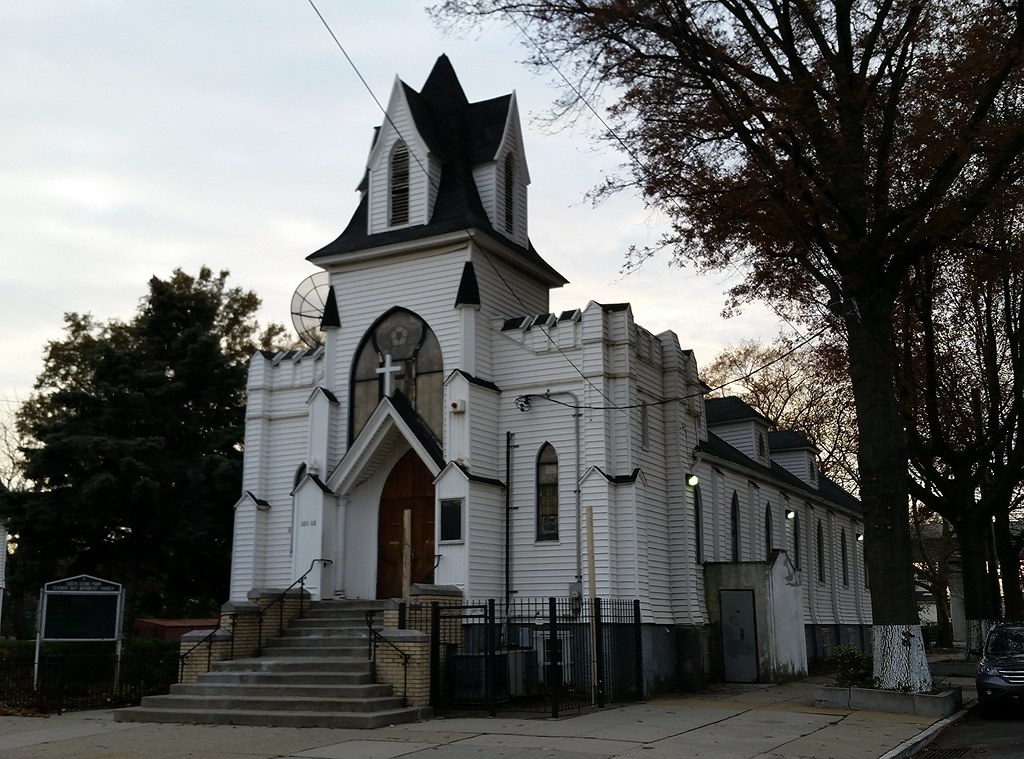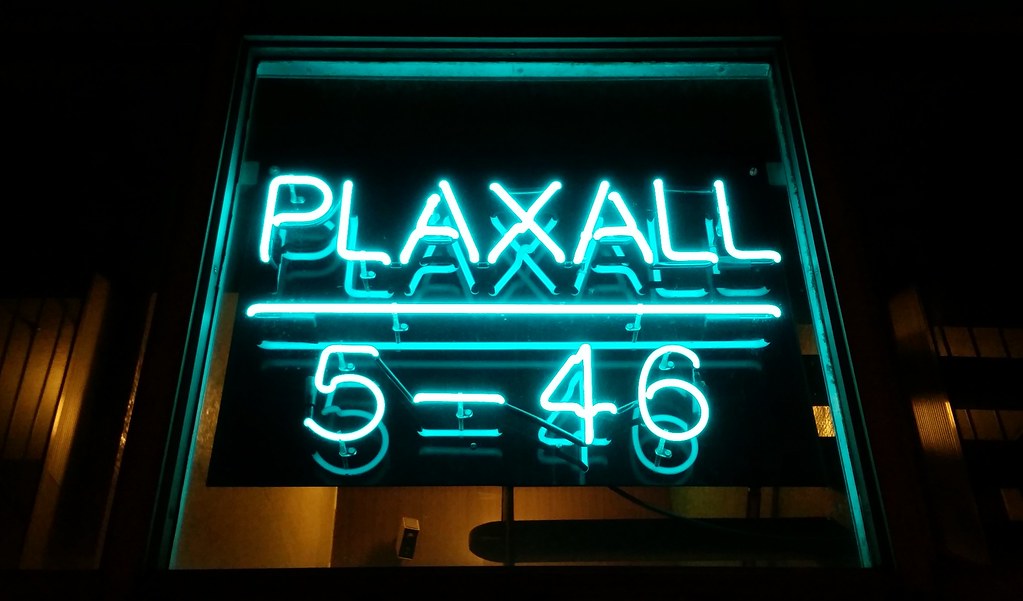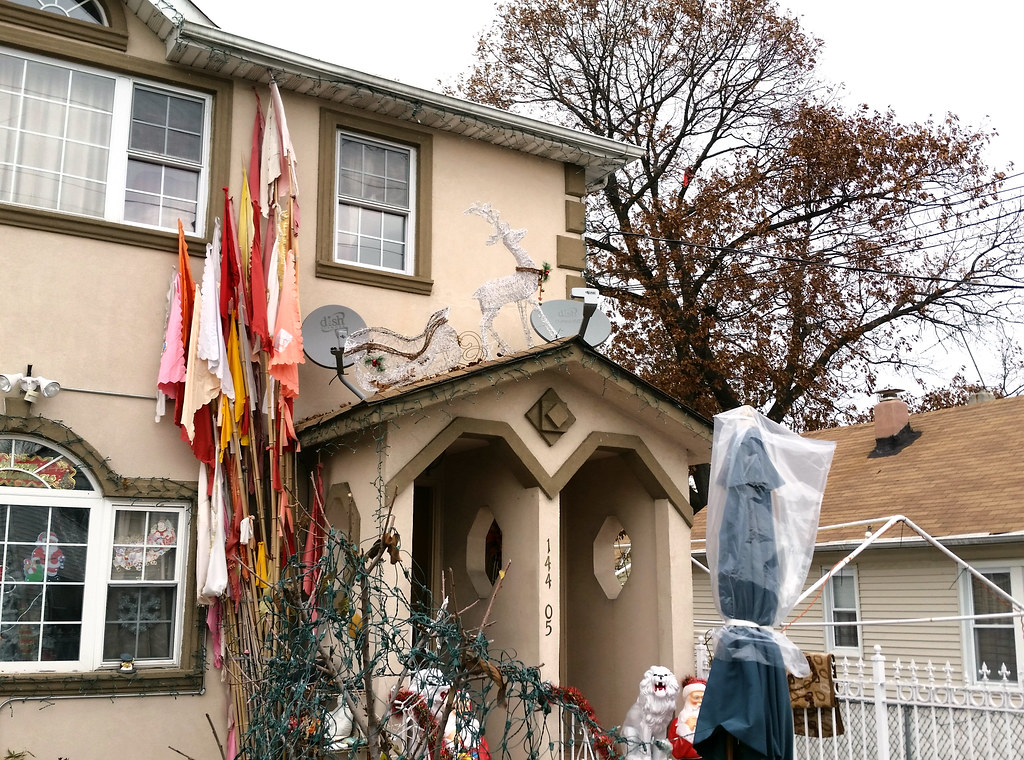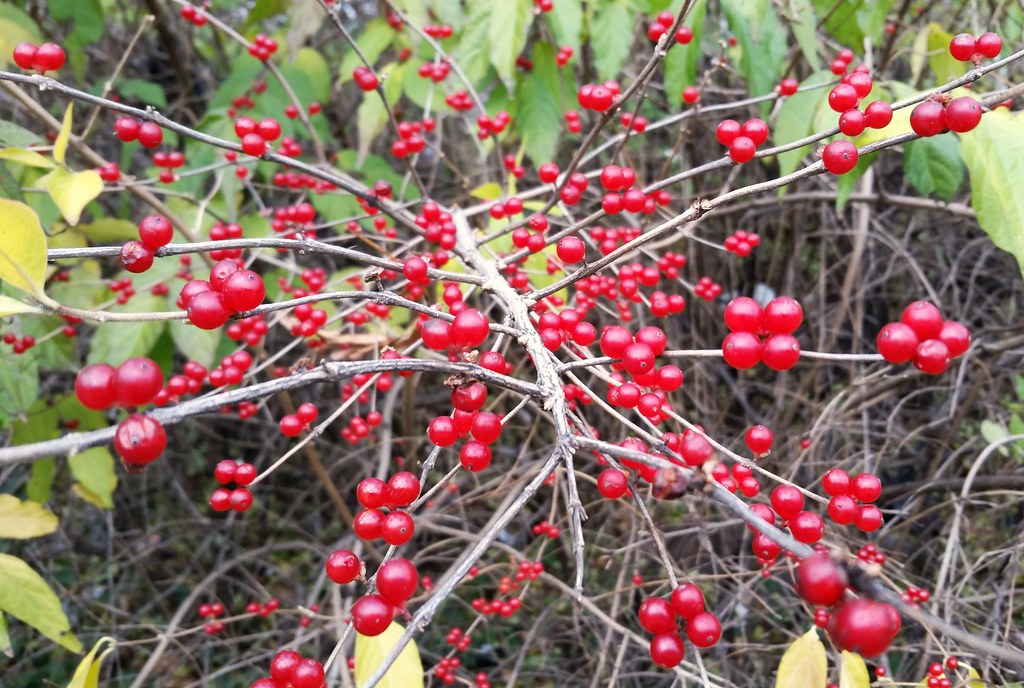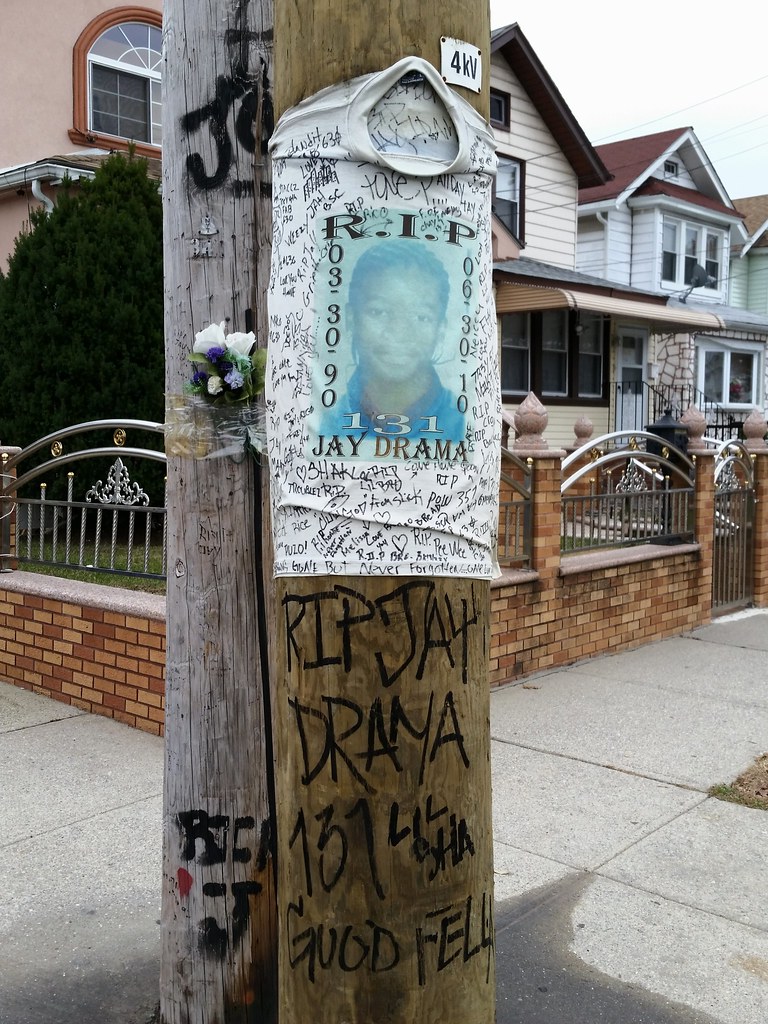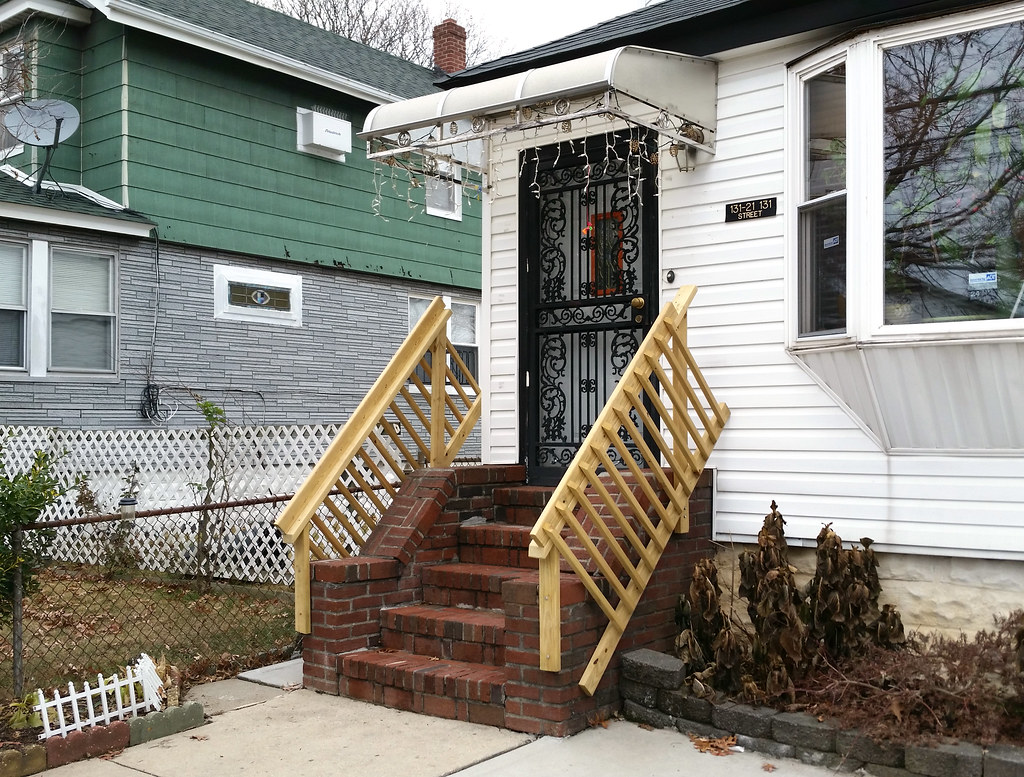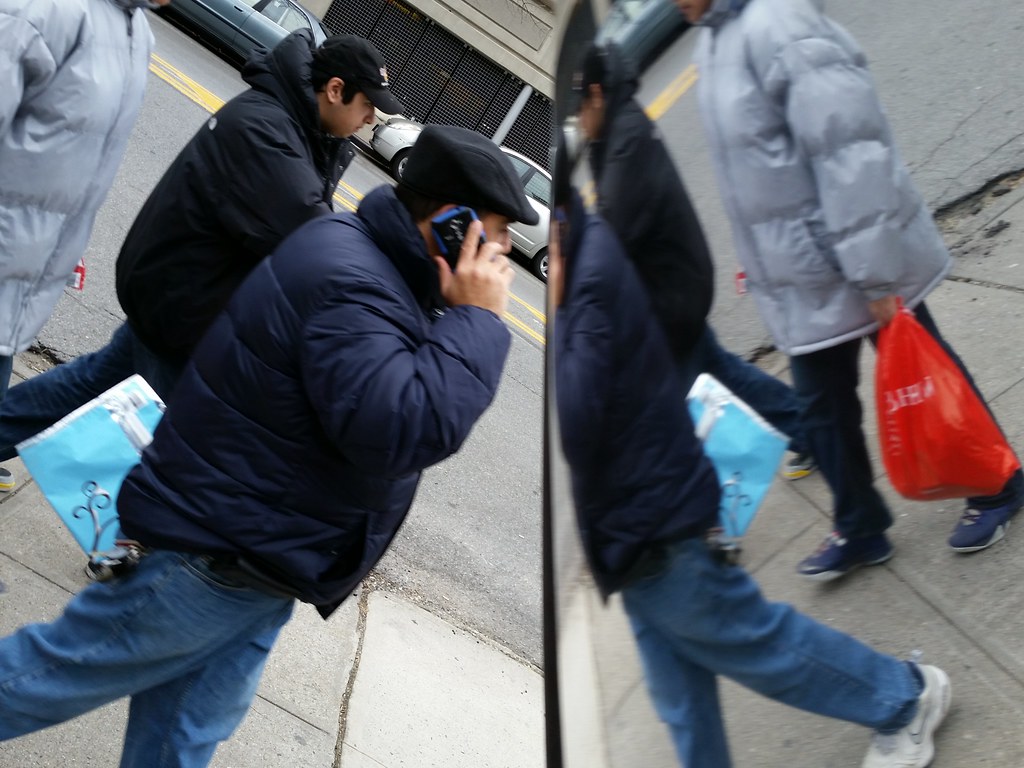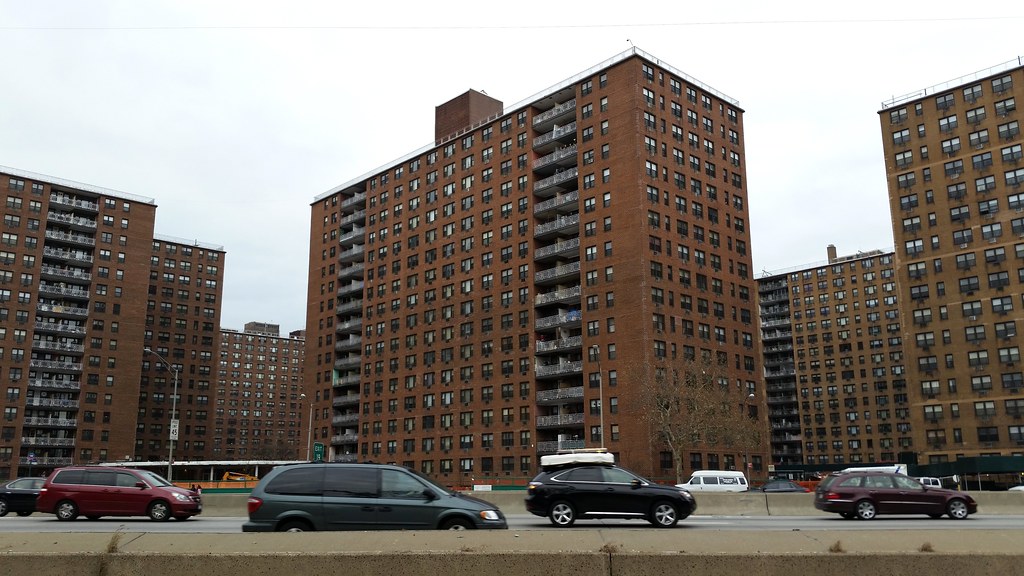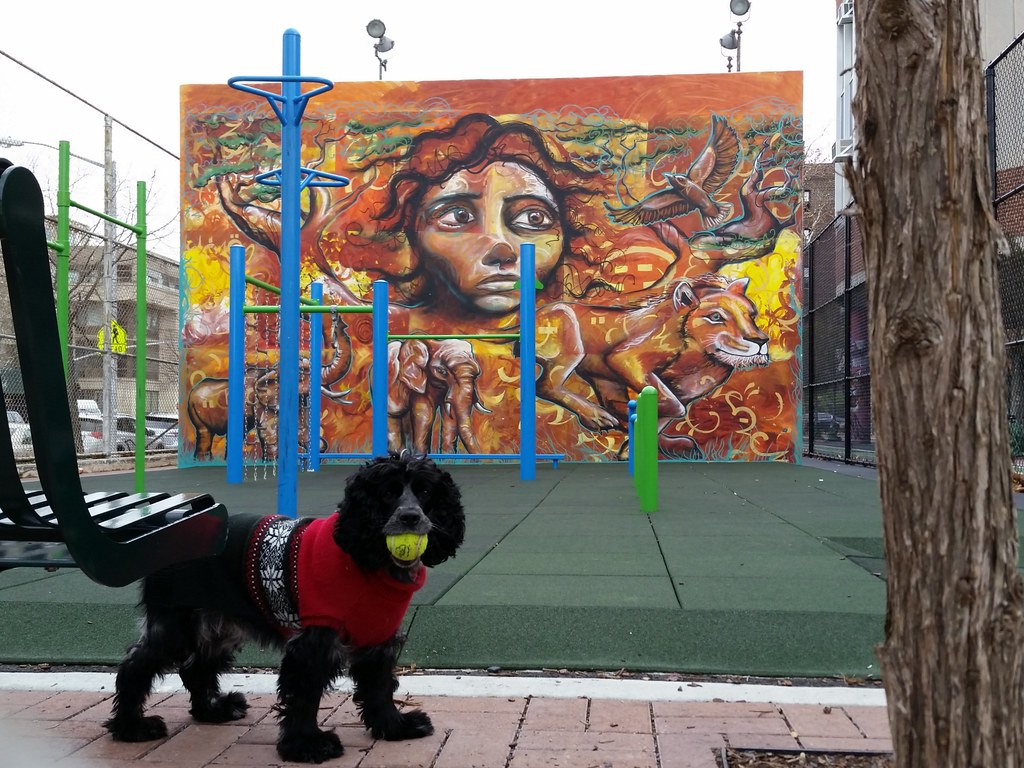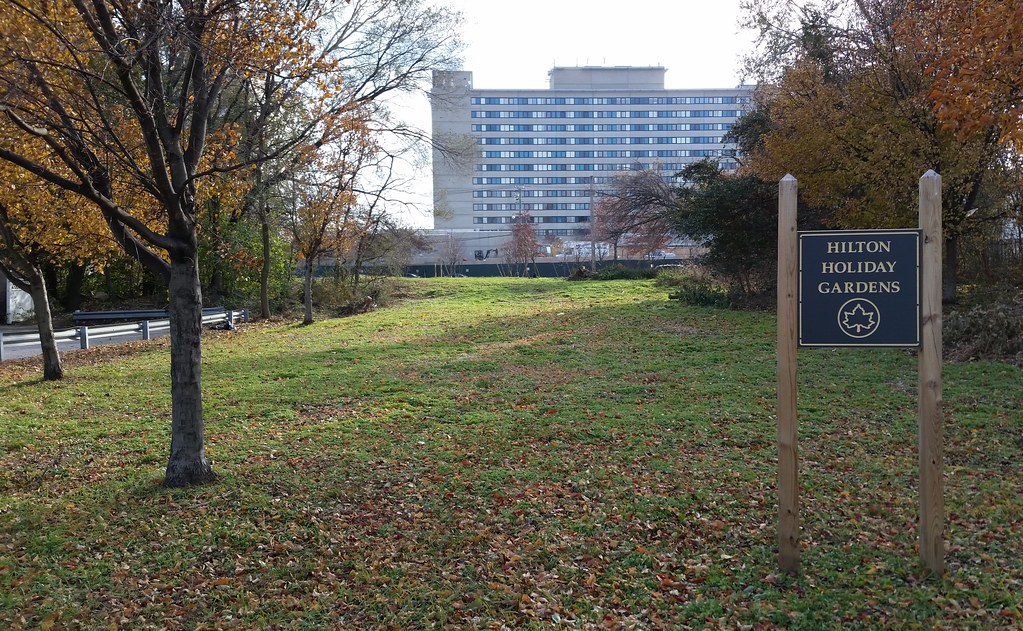
How did this little park near JFK Airport get its name? Well, if an NYC park has a strange name, there's a good chance that Henry Stern is the man who thought it up. For some time during Mr. Stern's reign as city parks commissioner (which ended in early 2002), the hotel in the background of this photo was a Holiday Inn, and there was a Hilton two blocks away. I'd guess that Mr. Stern just combined the names of the two nearby hotels and tacked on "Gardens" at the end for good measure.
It so happens that the former Holiday Inn (after first being rebranded as the International JFK Airport Hotel) became a Hilton in February 2012, but I doubt that had anything to do with how the park got its name, as Mr. Stern was no longer commissioner at that point. (It's hard to tell for sure in this Street View image, but it looks like the park already had a "Hilton Holiday Gardens" sign in 2007, when the hotel was still a Holiday Inn.) There's also now a Hilton Garden Inn located about half a mile away, but I think that's just a coincidence as well: the building was constructed between 2003 and 2005, after Mr. Stern's tenure.
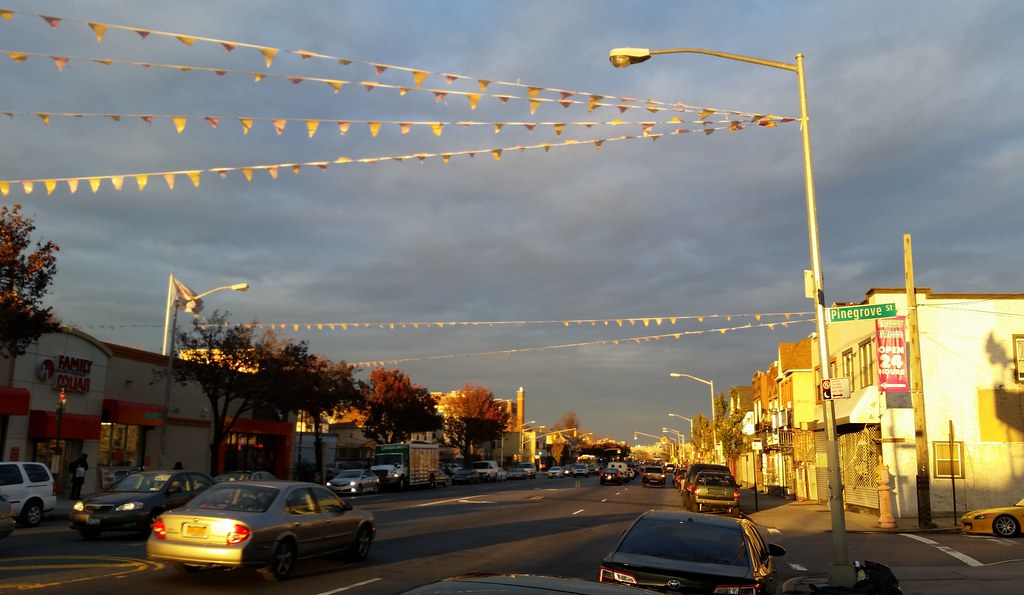
At right, although it's hard to see in this photo, is a pair of dueling Queens chrome dealers. A look at their storefronts reveals an impressive array of ornamentation options on display.

Now moored in Anable Basin, this boat once served as a Prudence Island ferry in Rhode Island. Plaxall purchased the vessel a couple of years ago with the idea of turning it into a floating beer garden, but that plan has yet to come to fruition.
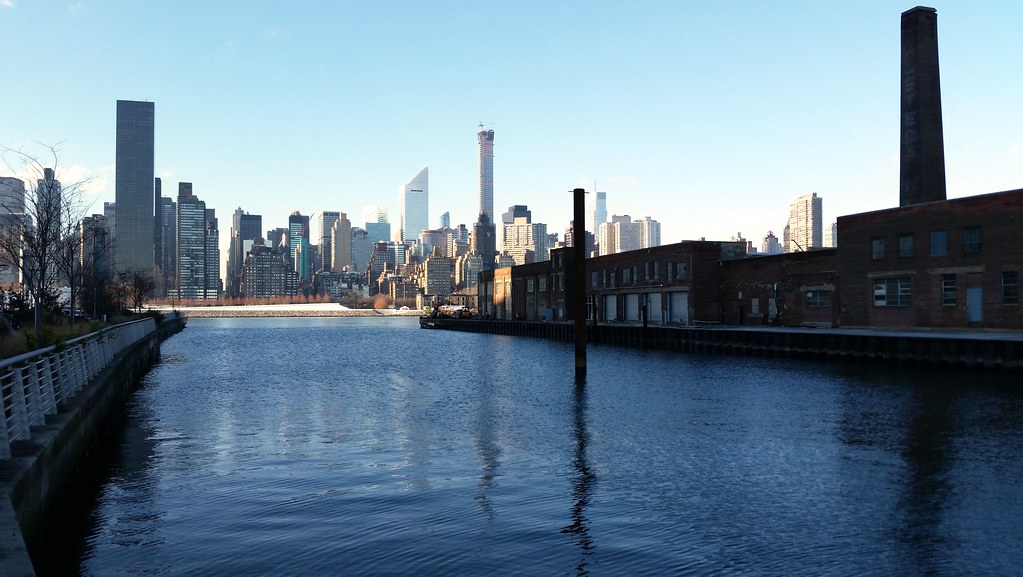
as seen from Anable Basin. Just to the right of the slant-roofed Citigroup Center is 432 Park Avenue, which was topped out in October and is now the world's tallest residential building (though not for long). It also has the highest roof of any building in NYC and is considered the city's second-tallest building altogether (though, again, not for long). You can see spectacular photos from the roof and from one of the apartments here.

The old Pepsi bottling plant on the Long Island City waterfront is gone, replaced by a swarm of glassy high-rise apartment towers, but its classic sign remains as a charming reminder (and example) of PepsiCo's tireless efforts in furthering our nation's obesity epidemic.
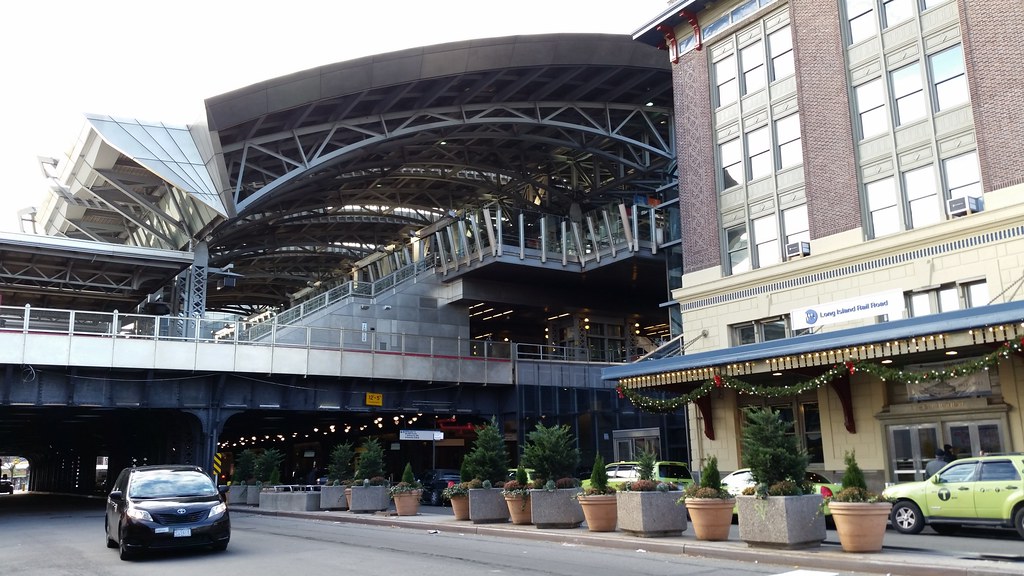
According to the MTA, this Long Island Rail Road station is "one of the busiest rail hubs in the nation. . . . Trains from 10 of the LIRR's 11 branches travel through Jamaica each day with weekday ridership exceeding 200,000 customers." The station is also the terminus of one of the two JFK AirTrain lines.
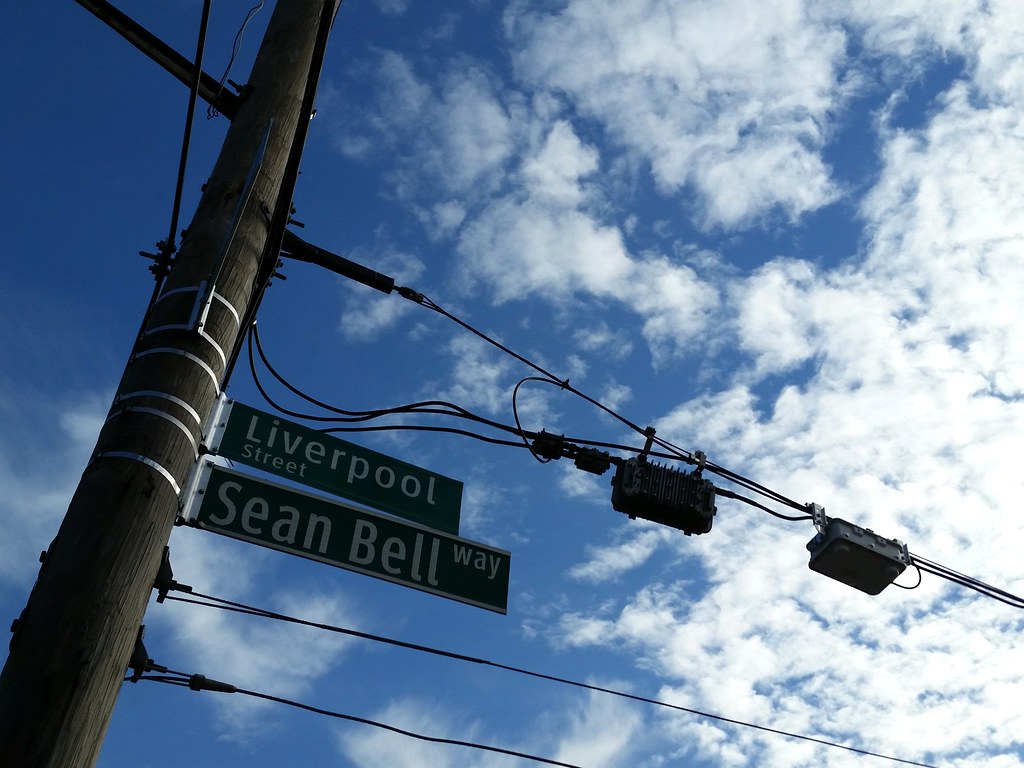
Sean Bell Way memorializes the unarmed man killed behind the wheel in a barrage of 50 bullets fired by undercover NYPD officers in 2006, shortly after leaving his bachelor party in the early morning of what would have been his wedding day. The officers said they believed someone in the car had a gun, and they opened fire on the vehicle after an intoxicated Mr. Bell drove it into an unmarked police van and struck one of the officers on the leg. You can read more about the controversial incident and its aftermath here (officers acquitted), here (financial settlement from the city), and here (one officer fired and others forced to resign).
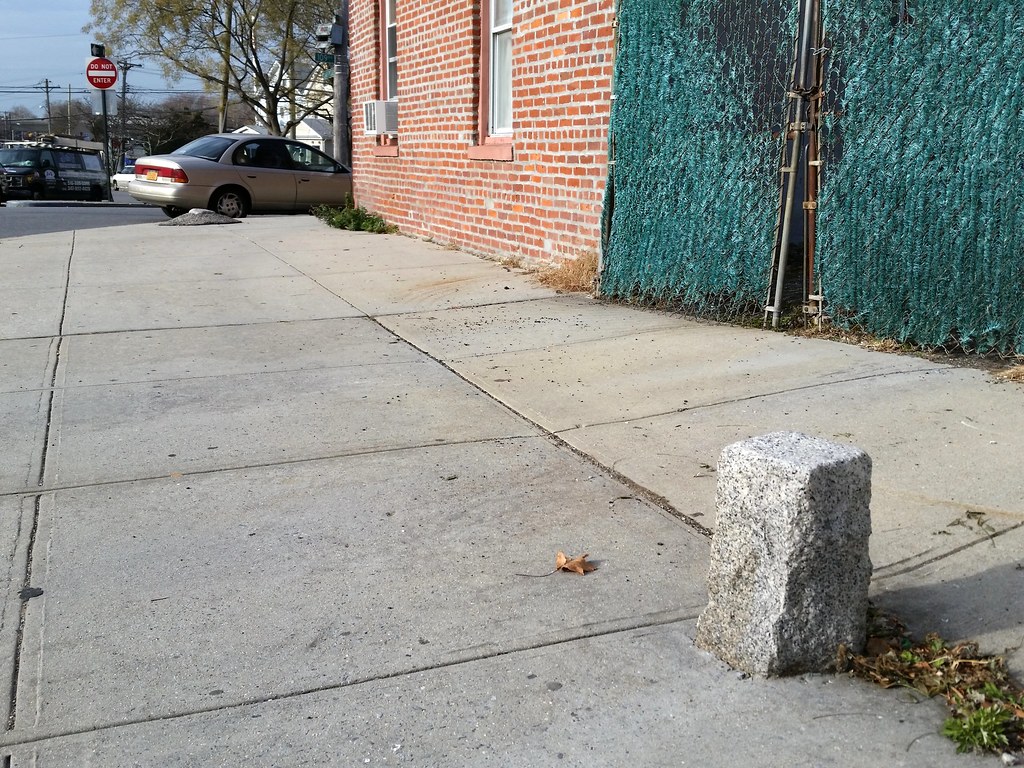
What's That Thing In The Sidewalk?
We actually have two things this time, here on 109th Avenue near 143rd Street in Jamaica: the little granite pillar in the foreground and a similar but shorter nub of granite surrounded by a blob of asphalt in the background (close-up). My best guess is that these stones were set here sometime in the 1910s or early 1920s to mark the property line when this section of 109th Avenue was built through a then-undeveloped piece of land that once belonged to the Van Siclen (or Sicklen) family. Near the bottom left corner of this 1909 map, you can see the property, labeled "A. Van Sicklen", before it was divided up by streets. By 1924, as this aerial image shows, the streets had been built, but the land was still undeveloped; the only house standing on the block pictured above at that time was an old Van Siclen dwelling (which still exists, as we'll see later in the day).

Peacocks (close-up), security cameras, and the Great Seal of the United States (close-up; the seal can be found at least three other times on the property). This is the third bootlegged version of the seal we've seen so far; here are the other two.
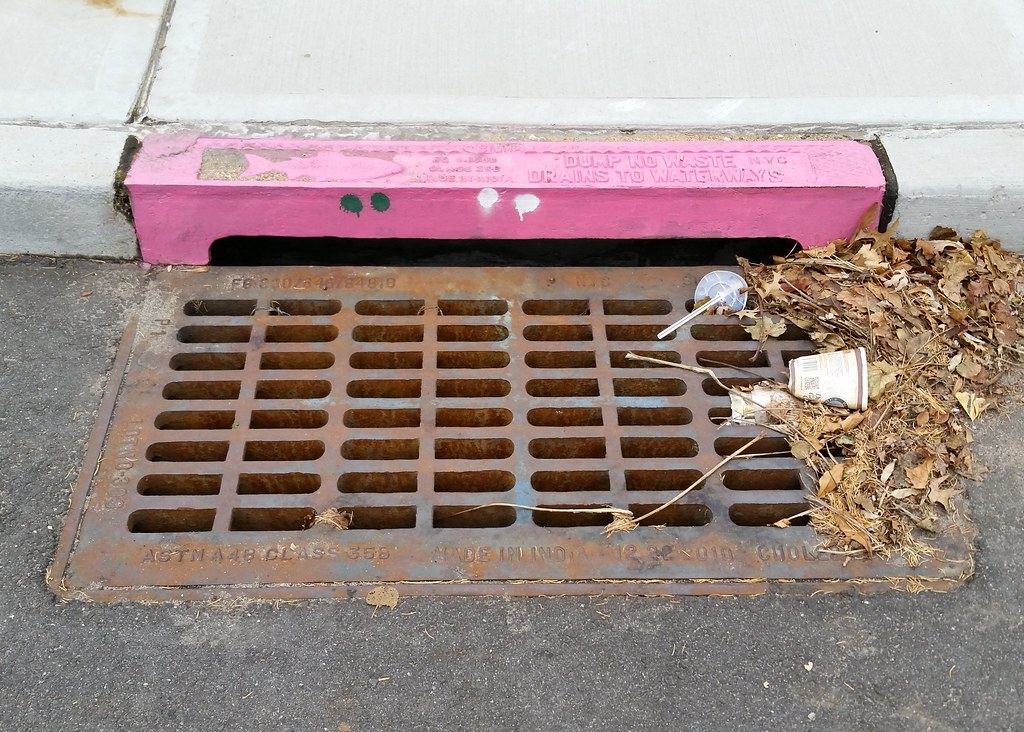
Most of NYC's sewers are combined sewers, meaning they collect both sewage from buildings and stormwater runoff from the streets in a single pipe and carry it all to a wastewater treatment plant. During times of significant rainfall or snowmelt, however, the increased volume of runoff entering the sewer can exceed the capacity of the system. In order to prevent a backup, the excess (including untreated sewage) is dumped directly into area waterways.
Some areas of the city, however, like almost all of southeastern Queens, have two separate sewer systems: one that carries sewage from buildings to a treatment plant and one that channels stormwater runoff directly to a local waterway. This prevents heavy volumes of runoff from overloading the treatment system and causing sewage overflows, but it also means that any pollutants in the runoff will be discharged into the city's waterways without treatment. Hence the warning on the storm drain above, which I assume was painted pink to call further attention to its message. (Other nearby storm drains were painted bright colors as well. Also, if you're wondering what the green and white dots are, here's your answer.)
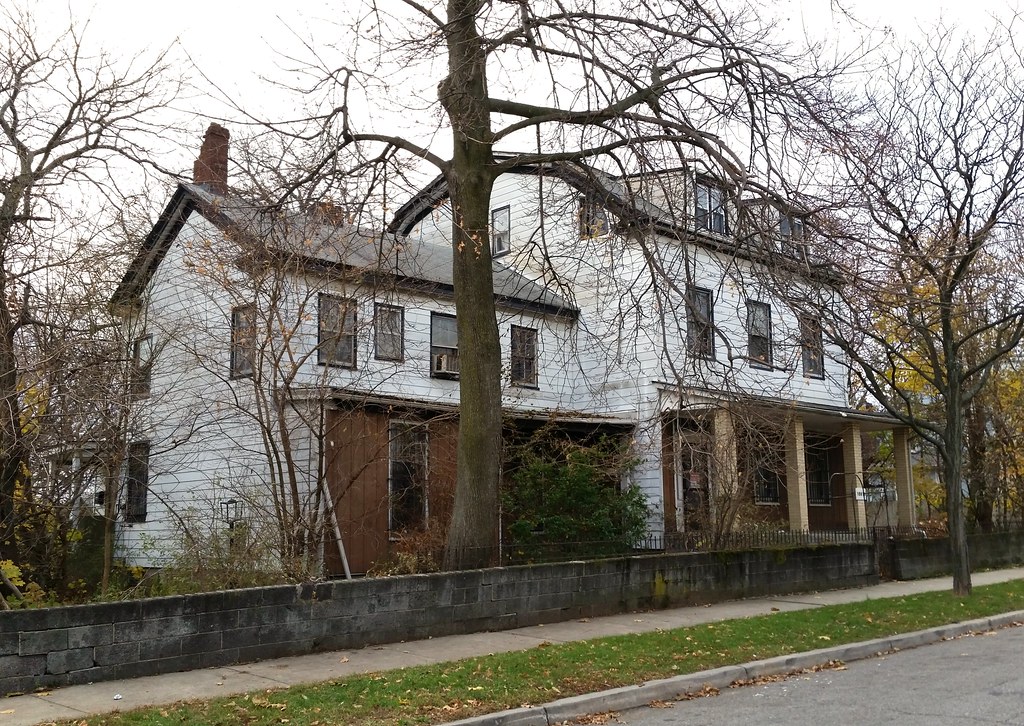
This is the old Van Siclen (or Sicklen) house (bird's-eye view) located around the corner from the granite markers we saw earlier today. The only information I can find about the structure comes from a few old photos of it added to the collections of the New York Public Library in the 1930s. Each of the photos has a description that was filed with it. According to one of these notes, the house was "said to be about two hundred years old" in 1931, but that sounds a little questionable to me. The other two notes indicate that a Disbrow and a Greenwood owned the house before it came into the possession of Van Sicklen.

The AirTrain terminal in Jamaica boasts of the "jazz legends . . . who have had an historical association with the Borough of Queens", although its list of musicians leaves out some pretty big names, including Earl Bostic, Wild Bill Davis, Lena Horne, Rose Murphy, Slam Stewart, and Cootie Williams.
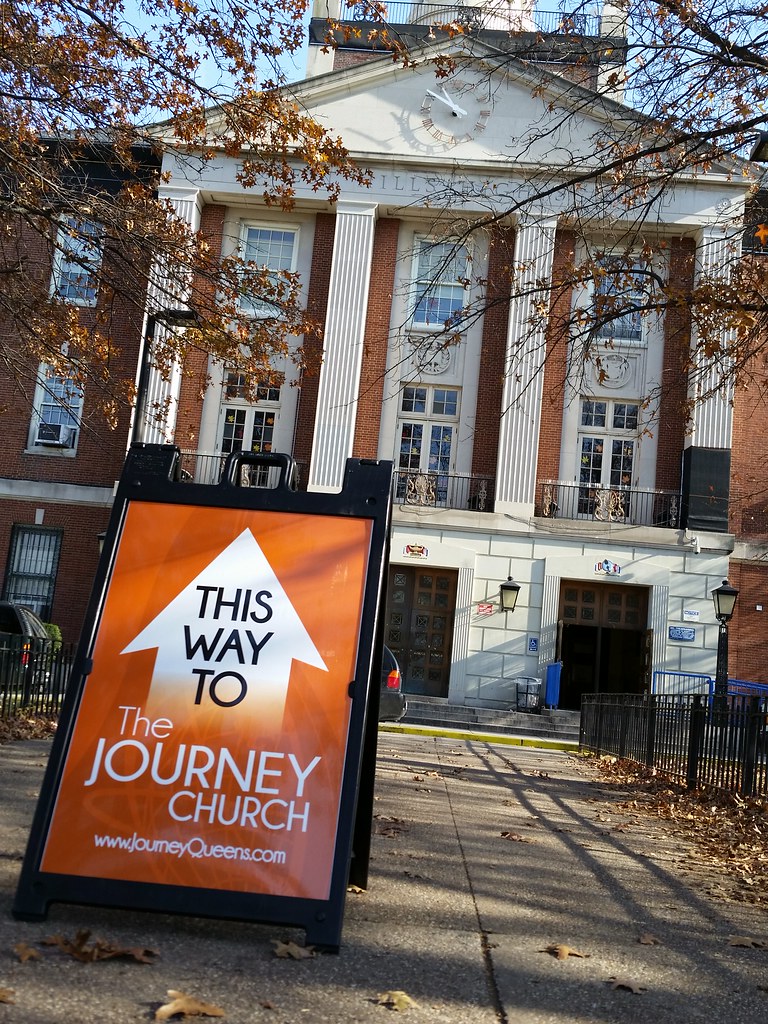
The Queens branch of this church meets every Sunday here at Forest Hills High School, alma mater of such cultural icons as Simon and Garfunkel, Burt Bacharach, the Ramones, Art Buchwald, and Jerry Springer.
NYC is said to be the only major school district in the country that has banned religious organizations from holding services in public school buildings, but dozens of religious groups, like the Journey Church, have been allowed to worship in city schools for years while the prohibition has been challenged (unsuccessfully) in court, and Mayor de Blasio's administration has said it will develop new rules to allow these groups to continue using school property for their services.
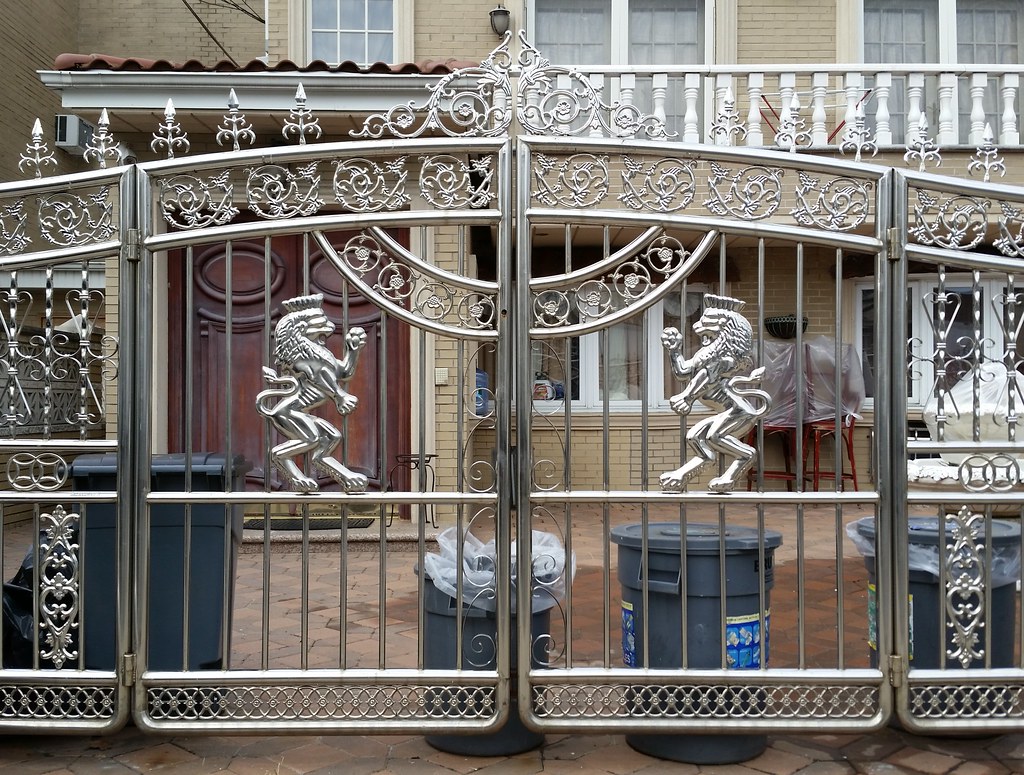
Another pair of leonine guardians highlight a particularly elaborate installation of Queens chrome.


